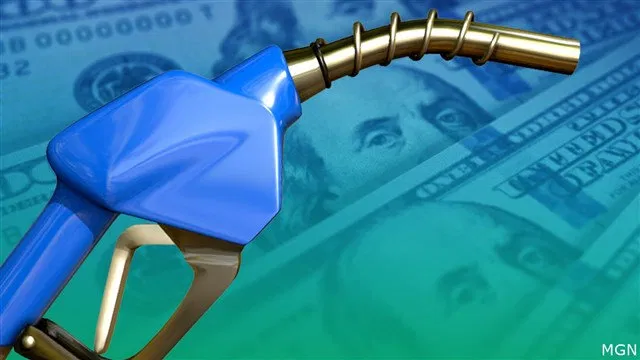PORTLAND, Ore. – After weeks of sharp increases fueled by a major pipeline outage, gas prices in Oregon and Washington are finally easing. The return of the Olympic Pipeline to full operations and the seasonal switch to winter-blend gasoline have brought much-needed relief to drivers, according to AAA Oregon/Idaho.
Gas Prices Begin to Drop
For the week of September 23, the national average for regular unleaded slipped two cents to $3.17 a gallon. Oregon’s statewide average fell six cents to $4.23, while in Bend the average dropped eight cents to $4.11.
“The outage of the Olympic Pipeline as well as refinery maintenance in the West Coast region created very tight supplies here and drivers sure felt pain at the pumps earlier this month,” said Marie Dodds, AAA Oregon/Idaho public affairs director. “Prices should keep falling in the coming weeks now that the pipeline is back in operation. Also, gas stations in Oregon can now sell winter-blend fuel, which costs less to produce than summer-blend gas.”
Also Read
Why Prices Rose So Quickly
The 400-mile Olympic Pipeline transports refined petroleum products from refineries in Washington State to terminals across the Pacific Northwest, including Portland. When the pipeline went offline on September 2, supplies tightened drastically.
During the outage:
-
Oregon’s average price jumped from $3.98 to just under $4.30 by September 13–14, the highest so far this year.
-
Washington’s average surged from $4.39 to a peak of $4.66 on September 14 and 16, making it the most expensive state for gasoline at the time.
While some fuel was shipped by barge to offset the disruption, the added time and cost amplified price spikes across the region.
Seasonal Shift to Winter Fuel
In addition to pipeline repairs, the recent switch from summer-blend to winter-blend gasoline is putting downward pressure on prices.
-
Winter-blend fuel costs less to produce and became available for sale in Oregon on September 15.
-
California and a few other states maintain stricter summer-blend requirements until October 31, which often keeps West Coast prices higher than the national average.
Historically, pump prices reach their lowest levels in late fall and early winter, before rising again in spring as refineries prepare to transition back to summer blends.
Oregon County Price Breakdown
AAA reported that 32 Oregon counties currently have averages above $4 per gallon. Some of the highest prices include:
-
Grant County – $4.50
-
Harney County – $4.45
-
Tillamook County – $4.47
-
Washington County – $4.40
-
Multnomah County – $4.39
The least expensive averages are found in Benton, Umatilla, Union, and Linn counties, all hovering near $4.03.
Supply, Demand, and Refinery Factors
Demand for gasoline rose slightly to 8.81 million barrels per day for the week ending September 12, up from 8.50 million b/d the previous week. Total domestic supply fell to 217.6 million barrels, while production dipped to 9.4 million b/d.
On the West Coast, refinery utilization dropped from 86.2% to 82.4%, contributing to tighter supplies. Regionally, total gasoline stocks edged up from 30.21 million to 30.37 million barrels, which should provide some stability.
Crude Oil Market Dynamics
Because crude oil accounts for about 52% of the cost of gasoline, global oil markets remain a critical factor in pump prices.
-
West Texas Intermediate (WTI) crude is currently trading around $63 per barrel, down from $65 a week ago and $70 a year ago.
-
WTI peaked at $80.04 on January 15 but has generally traded in the $60–70 range through 2025.
-
Longer-term, crude prices hit historic highs of $123.70 in March 2022 after Russia’s invasion of Ukraine, and the all-time record of $147.27 was set in July 2008.
This year, OPEC+ increased production by hundreds of thousands of barrels per day, helping temper prices despite geopolitical uncertainty in the Middle East and Eastern Europe.
The U.S. continues to lead global production, with output near 13.5 million barrels per day, close to record highs.
Diesel Prices
Diesel, essential for freight and agriculture, has also seen modest relief:
-
The national average dipped one cent to $3.69 per gallon.
-
Oregon’s average dropped one cent to $4.49.
Both remain well below record highs set in 2022.
Regional and National Comparisons
The West Coast remains the most expensive region for fuel in the U.S., with six states in the national top 10:
-
California – $4.66
-
Washington – $4.60
-
Hawaii – $4.47
-
Oregon – $4.23
-
Nevada – $3.91
-
Alaska – $3.89
-
Arizona – $3.58
By contrast, the nation’s cheapest gas is found in Oklahoma ($2.68) and Mississippi ($2.70).
The spread between the most and least expensive states is currently $1.97 per gallon.
Historical Context for Oregon Prices
Oregon’s statewide average began 2025 at $3.45 per gallon and peaked at $4.297 during the pipeline outage earlier this month. The lowest price this year was just under $3.45 in early January.
Compared to last year, Oregon’s current average is 52 cents higher, the largest year-over-year increase in the country. Washington follows closely, up 49 cents from September 2024.
Looking Ahead
Experts predict that prices should continue to ease through fall, provided there are no major disruptions. Risks remain, however, especially from the Atlantic hurricane season and potential geopolitical conflicts that could impact oil production or distribution.
“Any storm that targets the Gulf Coast can affect the production and distribution of oil and gas,” Dodds warned.
For now, Oregon drivers can expect gradual relief, with more significant declines likely as winter-blend fuel circulates and refineries ramp up operations.
Quick Stats
-
National average (regular): $3.17
-
Oregon average: $4.23
-
Bend average: $4.11
-
National average (diesel): $3.69
-
Oregon average (diesel): $4.49
-
Most expensive state: California ($4.66)
-
Least expensive state: Oklahoma ($2.68)
Finding the Best Price
AAA recommends using tools like the AAA Mobile App to track prices, plan routes, and find discounts. Prices vary not only state to state, but even within counties, making comparison shopping more important than ever.












